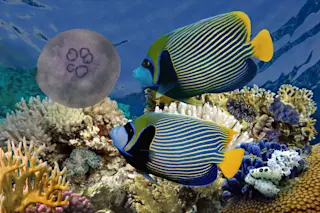It pays to be good looking — especially if you’re an endangered species.
Most conservation organizations have a mascot, often a majestic large mammal, colorful bird or awe-inspiring sea creature. This is no mistake. Humans are more likely to care about something that is beautiful. In turn, interacting with beautiful wild places brings us pleasure and healing.
In a recent study published in PLOS Biology, a group of French researchers aimed an investigation at the intersection of biodiversity, beauty and conservation. The scientists found that, among reef fish, the species that people perceive as most beautiful occupy a very small slice of the ecological pie. These aesthetic fish come from a common evolutionary lineage and play similar roles within the ecosystem. On the other hand, “ugly” species are ecologically and evolutionarily diverse and, on average, more threatened by extinction than their beautiful counterparts.
To assess each species' inherent aesthetic value, ...















